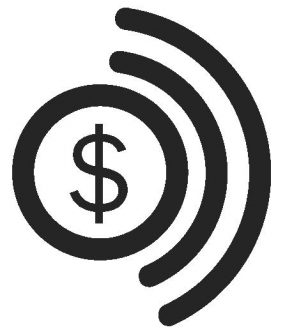eNews: Volume 20, Number 10 (February 2023)
Volume 20, Number 10 (February 2023)
From the Director’s Desk
John Howard, M.D. Director, NIOSH
Don’t Be “Lead” Astray From Safety
February 7th is National Periodic Table Day! On this day, we pay tribute to the table that helps us understand the properties and characteristics of chemical elements. One particular element, lead, also known as Pb on the periodic table, has been used by humans for thousands of years. Despite its many positive uses, lead continues to be a hazardous exposure in many jobs and industries.
Here are some things to keep in mind about lead exposure:
- Your body absorbs lead when you inhale contaminated air at work.
- If you eat, drink, or smoke in areas where lead is processed or stored, you could swallow lead dust without knowing.
- You can expose anybody who lives or works in your home. If you work with or near lead, you can take home lead dust. Lead dust on your clothes, shoes, or hair is hard to notice.
To keep workers and their families safe, NIOSH provides information and recommendations on the NIOSH lead webpage. The page offers information to reduce lead exposure in the workplace for both workers and employers:
- Workers: If you work with or near products or materials that contain lead, it can get inside your body. In addition to being exposed at work, taking lead home is a concern. Learn ways workers can protect themselves and their families from lead exposure.
- Employers: Workplace exposure limits are meant to protect workers from hazardous exposures in the workplace, including lead. Employers must ensure exposure limits are not exceeded. The page offers ways employers can use the hierarchy of controls to keep their workers safe.
NIOSH recently updated its lead webpage to incorporate information about NIOSH’s Adult Blood Lead Epidemiology and Surveillance (ABLES) program. State health departments collect and share blood lead level data with NIOSH. NIOSH and other agencies, including OSHA, use these data to monitor lead exposures in workplaces across the United States. The page also includes dashboards showing how work-related lead exposures have changed by year, state, and industry.
As long as lead and lead compounds are workplace hazards, NIOSH will continue to collaborate with state and federal partners to monitor exposures and make recommendations to keep workers and their families safe.
Workplace Violence and the Mental Health of Public Health Workers During COVID-19
Study authors: Hope M. Tiesman, NIOSH; Scott Hendricks, NIOSH; Douglas M. Wiegand, NIOSH; Barbara Lopes-Cardozo, CDC; Carol Y. Rao, CDC; Libby Horter, CDC; Charles E. Rose, CDC; and Ramona Byrkit, CDC
Why is this study important?
Throughout the COVID-19 pandemic, public health workers have faced increased risk of harassment from the public, including violence, threats, and discrimination at work. To prevent these incidents and help workers who have experienced them, it is important to understand the extent of workplace violence and its effects on mental health.
How did you do the study?
We developed an online survey, sent to state, tribal, local, and territorial public health workers in April 2021. Overall, 26,174 public health workers responded to the survey.
The survey included questions about age and other demographic information, workplace violence, other workplace factors, and mental health. To ascertain the experience of workplace violence, researchers developed three yes or no questions:
- Have you experienced stigma or discrimination due to your work?
- Have you received job-related threats due to your work?
- Have you felt bullied, threatened, or harassed due to your work?
What did you find?
Survey results showed that workplace violence was related to an increased risk of mental health symptoms. Specifically, workplace violence was related to a 21% greater risk of developing symptoms of depression or anxiety, a 31% greater risk of having PTSD (post-traumatic stress disorder), and a 26% greater risk of having suicidal thoughts. The increased risk of mental health symptoms persisted after accounting for other factors. The more workplace violence they experienced, the greater the chances they would report mental health symptoms.
What are the next steps?
Future efforts should include training, workplace support, and greater communication after a workplace violence incident occurs. It is also important to increase the capacity of public health departments to deal with workplace violence to protect public health workers who are at risk, especially during times of crisis such as the COVID-19 pandemic.
Employment Precarity and Increased Risk of Hazardous Occupational Exposures Among Residents of High Socioeconomic Hardship Neighborhoods
Study authors: Tessa Bonney, University of Illinois at Chicago; Kathleen M. Rospenda, University of Illinois at Chicago; Linda Forst, University of Illinois at Chicago; Lorraine M. Conroy, University of Illinois at Chicago; Dolores Castañeda, University of Illinois at Chicago; Sandra Avelar, University of Illinois at Chicago; Yvette Castañeda, University of Illinois at Chicago; Adlaide Holloway, Sinai Health System; and Jeni Hebert-Beirne, University of Illinois at Chicago
Why is this study important?
Health inequities among precariously employed workers may be partly explained by an increased risk for exposure to occupational hazards. Precariously employed workers are employed in jobs with conditions such as an unpredictable schedule, insecure work, or without a living wage or benefits. Study findings highlight that even among a group of self-identified precariously employed workers, there are degrees of precariousness. These degrees affect the likelihood of the workers being exposed to occupational hazards, and ultimately for worker health.
How did you do the study?
Community researchers administered a community-informed survey to 489 residents of Greater Lawndale, Chicago, who reported being precariously employed. The Greater Lawndale community is made up of two communities experiencing high economic hardship, defined as having high unemployment, low education and income, high poverty, crowded housing, and a large proportion of dependents under 18 or over 64 years of age. Using a modified index, we calculated employment precarity and statistically modeled its association with occupational exposures.
What did you find?
We identified a high amount of both precarious employment and self-reported exposure to occupational hazards in this sample. Most respondents reported workplace exposure to each hazard category at least some of the time. More than 40% of respondents reported exposure more than half of the time. Increases in relative employment precarity were significantly associated with self-reported exposure to chemical and biological hazards; physical hazards; and slip, trip, strike, fall, trap, or crush hazards at work. Ergonomic hazards, which are hazards that cause wear and tear on the body and can cause injury, were the most frequently reported hazards regardless of precarity, with 92.3% of the sample reporting workplace exposure in the past year.
What are the next steps?
The work is part of a larger project called the Greater Lawndale Healthy Work (GLHW) Project. Our academic-community partnership committee combined a steering group with the community research team to form the GLHW Council. After completing data collection, we added members to the GLHW Council to address gaps in our experiences and expertise and to inform intervention development.

Photo by ©Getty images
Director’s Desk
Research Rounds
- Workplace Violence and the Mental Health of Public Health Workers During COVID-19
- Employment Precarity and Increased Risk of Hazardous Occupational Exposures Among Residents of High Socioeconomic Hardship Neighborhoods
Highlights
- American Heart Month
- Improve Respirator Fit Evaluations by Entering NIOSH-Sponsored Challenge
- NIOSH Renews Partnership Agreement with French Agency for Food, Environmental, and OSH
- Uterine Cancer Now Added to List of Covered WTC-Related Health Conditions
- NIOSH Congratulates
Monthly Features
John Howard, M.D., Director
Christina Spring, Editor in Chief
Managing Editor
Tanya Headley
Section Editor
Anne Blank, Research Rounds
Kiana Harper, Highlights & Monthly Features
Contributing Editors
Sarah Mitchell
Copy Editor
Cheryl Hamilton
Technical Support
Steve Leonard, Technical Lead
Matt Osborne, Web Developer
To receive the NIOSH eNews email newsletter, enter your email address:

American Heart Month
Protect your heart! During American Heart Month, follow NIOSH on Facebook, Instagram, Twitter, and LinkedIn for the latest research and information related to workplace safety and health and your heart.
Improve Respirator Fit Evaluations by Entering NIOSH-Sponsored Challenge
NIOSH has announced the NIOSH Respirator Fit Evaluation Challenge, a three-phase prize challenge with $350,000 in prize money. This opportunity challenges innovators to design a respirator fit test and feedback solution that delivers users real-time information on a filtering facepiece respirators (FFRs) fit. Innovations could help both workplaces and the general public to conduct fit testing. The Challenge is a collaboration with Capital Consulting Corporation and the National Aeronautics and Space Administration. To learn more, attend a webinar on February 2 at 1 p.m. (EST) or visit the Respiratory Fit Evaluation Challenge webpage.

NIOSH Renews Partnership Agreement with French Agency for Food, Environmental, and OSH
NIOSH and Agence Nationale de Securite Sanitaire de L’alimentation, de L’environnment et due Travail (ANSES) announce the renewal of their mutually beneficial and long-standing partnership. ANSES is the French Agency for Food, Environmental, and Occupational Health and Safety. The partners will focus upon strengthening their scientific and technical knowledge surrounding occupational safety and health. For more information about this partnership, contact Maria Strickland.
Uterine Cancer Now Added to List of Covered WTC-Related Health Conditions
The World Trade Center (WTC) Health Program has issued a final rule adding all types of uterine cancer, including endometrial cancer, to the List of WTC-Related Health Conditions (List), effective January 18, 2023. This means program members meeting the eligibility requirements can get these conditions certified as WTC-related, and the program will cover treatment with no out-of-pocket costs. Eligible members will also qualify for all program benefits like monitoring, certain cancer screenings, and benefits counseling. Read the NIOSH update to learn more.
NIOSH Congratulates
NIOSH Wins Best Poster at Society of Risk Analysis Conference
NIOSH researchers Todd Niemeier and Naomi Hudson and coauthors, Andy Maier, and John Reichard received the best poster award at the Society of Risk Analysis Conference for their poster, entitled “Dissolution of Inorganic Lead (Pb) Compounds in Synthetic Sweat to Assess Risk of Dermal Exposure.” The authors plan to publish this study.
New Communication Products & Reports
FACE Reports
- Sergeant Struck by a Motor Vehicle on Interstate Highway—New Mexico
- Trooper Crashes on Roadway while Responding to Reckless Driver Complaint—Kentucky
- Officer Dies in Motor Vehicle Crash at an Intersection while Responding to a Shots Fired Call—South Carolina
- Restaurant Worker Fatally Injured From Toxic Fumes Caused From Mixing of Cleaning Chemicals—Massachusetts
Fire Fighter Fatality Investigation and Prevention Program Reports
- 34-Year-Old Assistant Fire Chief Suffers Heart Attack at a Motor Vehicle Accident Scene—Maryland
- 36-Year-Old Probationary Firefighter Suffers Cardiac Arrest After Completing SCBA Drill—Arizona
- Firefighter Dies After Falling Through a Floor at a Large Area Residential Structure Fire—Maryland
Health Hazard Evaluation Reports
PPE Case Reports
NIOSH Science Blog
Sign up to have notifications about new NIOSH Science Blogs delivered directly to your inbox! Here are the blogs from last month:
Federal Register Notices
World Trade Center Health Program Scientific/Technical Advisory Committee (WTCHP-STAC)
The notice was posted on January 18. Comments must be received by February 9. The meeting will be held on February 9.
Advisory Board on Radiation and Worker Health, Subcommittee for Procedures Reviews, National Institute for Occupational Safety and Health (NIOSH)
The notice was posted on November 28. Comments must be received by February 9. The meeting will be held on February 16.
Proposed Data Collection Submitted for Public Comment and Recommendations: Pre-Shift Lighting Interventions to Improve Miner Safety and Well-Being
The notice was posted on January 18. Comments must be received by March 20.
NORA
Oil and Gas Extraction NORA Council
Read about recent labor force trends in the U.S. oil and gas extraction, as well as potential implications for worker safety and health, on the NIOSH Science Blog.
News from Our Partners

NEW Funding for High Obesity Program
CDC recently announced that fiscal year 2023 funds are available for CDC-RFA-DP-23-0013: The High Obesity Program. Poor diet and low levels of physical activity affect overall health and are significant risk factors for obesity and chronic disease. This Notice of Funding Opportunity will carry out activities to address obesity levels to achieve optimal health for all Americans. Applications are due March 21.
National Center for Farmworker Health Awarded Grant to Support Farmworkers
The National Center for Farmworker Health recently received $36 million in grant funding by the U.S. Department of Agriculture. The funds will help mitigate a portion of the pandemic-related expenses farmworkers have incurred as essential workers.
West Virginia University Certified Online Population Health Studies Program—Apply Today!
West Virginia University recently announced its Master of Science in Population Health fully online program is now certified by the Commission on Accreditation of Healthcare Management Education (CAHME). This certification makes it one of five inaugural programs in the country to be CAHME-certified in population health management. Applications are currently being accepted for the fall 2023 term—learn more and apply.
Support for Pilot Project Research
The University of Cincinnati Education Research Center (ERC) Pilot Research Project Program is now accepting grant proposals for research projects related to occupational safety and health. Proposals are due April 7. Visit the Cincinnati ERC to learn more.
Support Decent Work for All as a Public Health Goal in the United States
The American Public Health Association (APHA) recently posted a policy document, which was a collaboration from a group of safety and health professionals, aiming to further the discussion on decent work and healthy work. The policy promotes decent work as a U.S. public health goal through a comprehensive approach that builds upon existing APHA policy statements and addresses statement gaps.
Call for Manuscripts:
- Special Issue of Healthcare titled “What Did the COVID-19 Pandemic Teach Us About Health Literacy and Health Communication?”: The deadline to submit manuscripts is March 31.
Call for Proposals:
- Work, Stress, and Health 2023: The deadline to submit proposals is March 6.
Conferences, Meetings, Webinars, & Events
This page provides a list of publicly available occupational safety and health-related conferences, meetings, webinars, and events sponsored by NIOSH as well as other government agencies, and nongovernment agencies, such as universities, professional societies, and organizations.
